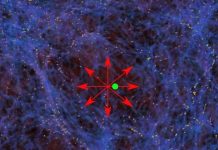
Scientists at Lawrence Berkeley National Laboratory have made a significant breakthrough in the field of quantum information science, demonstrating a new way to use the spin of electrons to transport quantum information over long distances.
This discovery could pave the way for advanced quantum technologies, including super-fast computers and highly sensitive sensors.
The team, led by researchers Joseph Orenstein, Yue Sun, Jie Yao, and Fanghao Meng, focused on a property of electrons known as “spin.”
Unlike traditional digital information, which is stored in binary form as zeros and ones, electron spin can represent more complex information states, making it an ideal candidate for quantum computing.
Their research, published in Nature Physics, explores the behavior of magnon wave packets in antiferromagnets.
Magnons are essentially collective excitations or “waves” of electron spin that move through a material.
Antiferromagnets are materials where the electron spins align in alternating directions, canceling out any overall magnetism.
This unique property allows magnons to travel without the interference that typically occurs in magnetic materials.
Traditionally, it was believed that these magnon waves could only travel short distances in antiferromagnetic materials.
However, the Berkeley Lab team used a novel technique involving pairs of laser pulses to disturb the spin arrangement in one area and observe how these disturbances traveled through the material. The experiments revealed that these waves could move much further and faster than previously thought.
In their experiments with a specific antiferromagnetic material, chromium sulfide bromide (CrSBr), the researchers discovered that magnon wave packets could propagate like ripples on a pond, spreading out swiftly in all directions.
This was a surprising finding because existing models, which only considered interactions between neighboring spins, predicted much slower speeds and shorter distances.
Orenstein explained the phenomenon by comparing the electron spins to tiny bar magnets. In their model, instead of just influencing their immediate neighbors, each “magnet” affects all others across the entire system, similar to how a refrigerator magnet sticks to a fridge door. This long-range interaction allows the magnon waves to travel faster and further than expected.
This breakthrough demonstrates the potential of using electron spin in quantum computing and other applications, where reliable and efficient transmission of quantum information over distances is crucial.
The discovery not only challenges previous understandings of spin dynamics in antiferromagnets but also offers exciting possibilities for the development of future quantum technologies.



